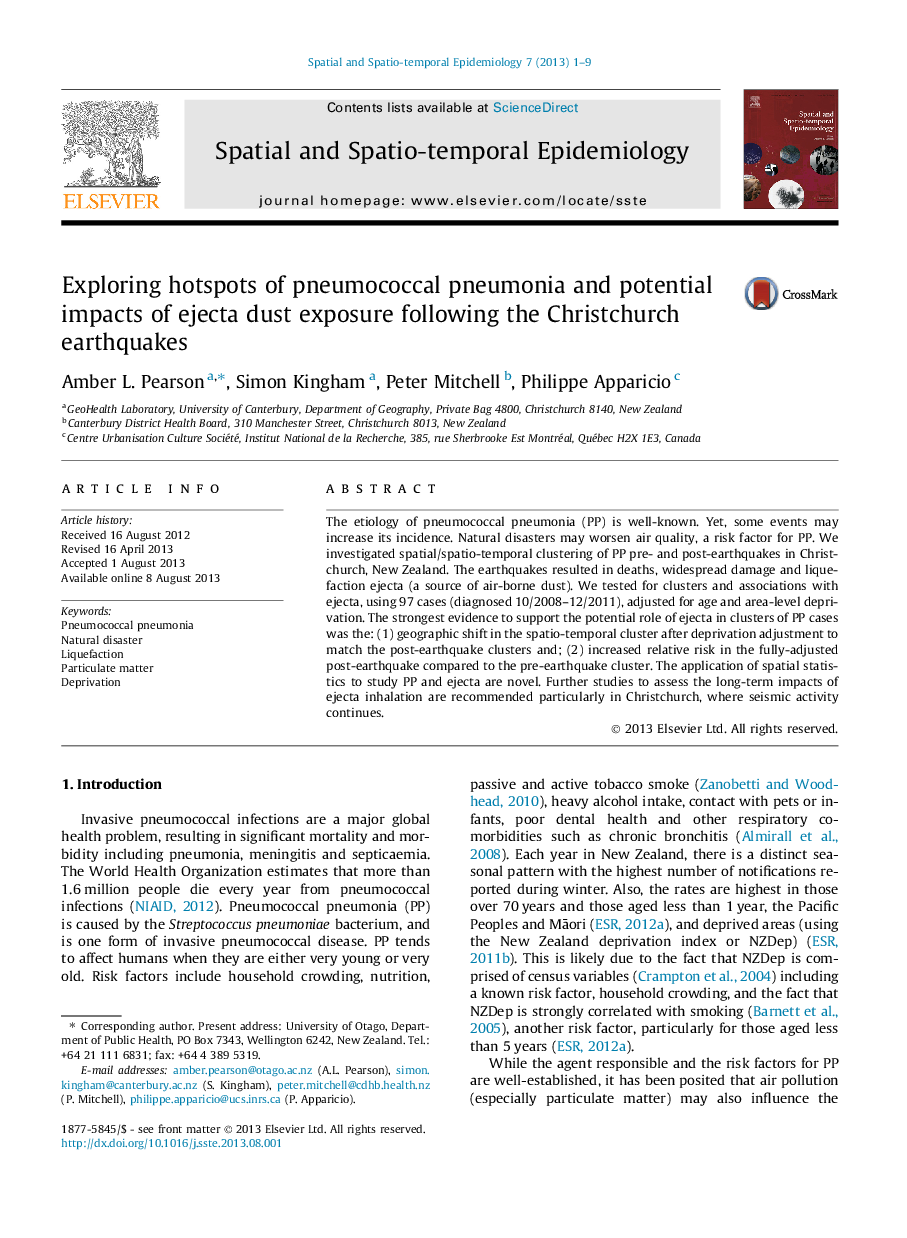| Article ID | Journal | Published Year | Pages | File Type |
|---|---|---|---|---|
| 7496168 | Spatial and Spatio-temporal Epidemiology | 2013 | 9 Pages |
Abstract
The etiology of pneumococcal pneumonia (PP) is well-known. Yet, some events may increase its incidence. Natural disasters may worsen air quality, a risk factor for PP. We investigated spatial/spatio-temporal clustering of PP pre- and post-earthquakes in Christchurch, New Zealand. The earthquakes resulted in deaths, widespread damage and liquefaction ejecta (a source of air-borne dust). We tested for clusters and associations with ejecta, using 97 cases (diagnosed 10/2008-12/2011), adjusted for age and area-level deprivation. The strongest evidence to support the potential role of ejecta in clusters of PP cases was the: (1) geographic shift in the spatio-temporal cluster after deprivation adjustment to match the post-earthquake clusters and; (2) increased relative risk in the fully-adjusted post-earthquake compared to the pre-earthquake cluster. The application of spatial statistics to study PP and ejecta are novel. Further studies to assess the long-term impacts of ejecta inhalation are recommended particularly in Christchurch, where seismic activity continues.
Related Topics
Health Sciences
Medicine and Dentistry
Public Health and Health Policy
Authors
Amber L. Pearson, Simon Kingham, Peter Mitchell, Philippe Apparicio,
